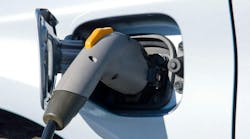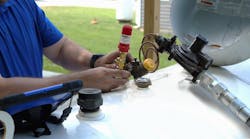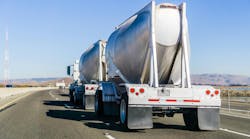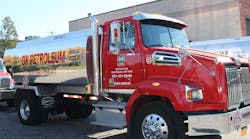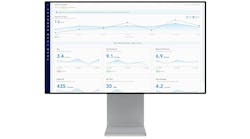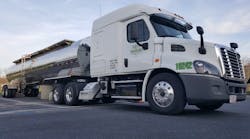The Energy Information Agency predicts another record year for US crude oil production. By current estimates, total US crude oil production should climb to 7.32 million barrels a day during 2013.
About 10% of that crude oil output will come from the Bakken shale formation in western North Dakota and eastern Montana. The impact of the Bakken output on trucking and other transport modes was the focus of the second annual Bakken Crude Oil Logistics Conference held March 7 and 8 in Houston TX. The conference was organized by the Petroleum Institute.
Trucks play a big role in the Bakken operations, and they are the most visible part of the oilfield for much of the public, according to John Conley, past president of National Tank Truck Carriers. “Trucks are the workhorses of the Bakken, and they are the moving billboards of the shale gas and oil industry,” he said during the conference.
Energy production in the Bakken and other shale oil and gas plays across the United States has been a great bonanza for tank truck fleets, and trucking in general, according to Conley. At the same time, the oilfield presents a very tough operating environment for trucking.
“Fleets are making money and drivers have plenty of work in the oilfield, but it is important to stay focused on safety,” Conley said. “Safe trucking must be everyone’s responsibility—from cradle to grave. CVSA (Commercial Vehicle Safety Alliance) Oilfield Roadcheck 2012 shows we have some problems. Compared to trucking in general, oilfield fleets had three times the driver out-of-service violations and two times the maintenance out-of-service violations.”
Cargo tank rollovers are a special challenge in the oilfield, because so much hauling is done on unpaved roads. “Speed is the main cause of rollovers in the oilfield,” Conley said. “Drivers are going too fast for conditions. We have to end rollovers.”
Oilfield drivers also need to pay more attention to rail crossings. “The bottom line is: trains and trucks don’t mix,” Conley said. “Programs like Operation Lifesaver show drivers how to negotiate rail crossings safely.”
Oil and gas producers need to be part of the trucking safety effort. It’s important for all of the players in the industry to make sure that oilfield trucking incorporates the same safety culture and practices that are in place throughout tank trucking and the rest of the trucking sector.
“Producers need to know and monitor the fleets they hire to represent them on the road,” Conley said. “If a fleet is handling interstate shipments, is it registered with FMCSA (Federal Motor Carrier Safety Administration? If the fleet is handling hazardous materials, does it have a hazmat registration from PHMSA (Pipeline and Hazardous Materials Safety Administration)? Does the fleet have the proper level of insurance, and does it have a fulltime safety director and demonstrable safety and training program? Do the drivers have valid commercial driver licenses, tank endorsements, and hazmat endorsements?
“We all need to work together to make oilfield trucking as safe as possible. Let’s not let trucking run over the ‘Golden Goose’ that is the oilfield.”

